Midweek Review
Sri Lanka’s collective failure on the Geneva front

by Shamindra Ferdinando
Successive governments facilitated a high profile treacherous Geneva process by conveniently or incompetently refraining from exploiting former RAF pilot Michael Wolfgang Laurence Morris or Lord Naseby’s shocking disclosure in the House of Lords on Oct 12, 2017 to set the record straight as regards unsubstantiated war crimes.
The real issue is not defeat suffered by Sri Lanka at the UNHRC yesterday (23) but the failure on the part of successive governments to properly defend the armed forces.
Sri Lanka defeated the Liberation Tigers of Tamil Eelam (LTTE), which was widely considered to be invincible and the most ruthless terrorist organisation in the world, following a nearly three-year long combined security forces campaign. The war was brought to a successful conclusion on the banks of the Nanthikadal lagoon on May 19, 2009.
Sri Lanka’s collective failure to take advantage of Lord Naseby’s revelation as well as other related credible information in the public domain is nothing but betrayal of the war-winning armed forces. Lord Naseby provided the much needed ammunition to expose the Geneva lie two years after the Sirisena-Wickremesinghe government betrayed the armed forces at the UNHRC in Oct 2015.
On behalf of Sri Lanka, the then Permanent Representative in Geneva Ambassador Ravinatha Aryasinghe accepted the ‘Accountability Resolution 30/1’ on a specific directive from Premier Wickremesinghe-FM Mangala Samaraweera. Aryasinghe, who had earlier strongly opposed the US-led resolution at the informal discussions with the Core Group of Sri Lanka, is our Ambassador in Washington now.
A controversial US statement
The first indication that unsubstantiated war crimes accusations can be successfully countered was received at the first ever Colombo Defence Seminar conducted in late May-June 2011 during Lt. Gen. Jagath Jayasuriya’s tenure as the Commander of the Army (July 2009-July 2013). Jayasuriya succeeded war-winning Army Commander Gen. Sarath Fonseka in the wake of an unprecedented dispute between the Rajapaksas and Fonseka. The Sinha Regiment veteran ended up as the common candidate at the 2010 presidential election challenging Mahinda Rajapaksa his Commander in Chief only a few months before.
Thanks to Wikileaks, the US role in making Fonseka the common candidate as well as ensuring the one-time LTTE proxy, the Tamil National Alliance (TNA) extending support to him is in the public domain. The day the TNA declared its support to Fonseka, the unsubstantiated war crimes accusations should have been unceremoniously discarded. But, unfortunately, the war crimes accusations persisted even after the predominantly Tamil speaking northern and eastern electoral districts overwhelmingly voted for him.
At the first Defence Seminar, the then US Defence Advisor in Colombo Lt. Col. Lawrence questioned the very basis of allegations, including the execution of surrendered terrorists directed at the Army (58 Division/formerly Task Force I). The US official was responding to a query posed by retired Major General Ashok K. Mehta, formerly of the Indian Peace Keeping Force (IPKF) deployed here, to Major General Shavendra Silva, the first General Officer Commanding (GoC) of the celebrated 58 Division. Silva, the incumbent Army Chief was there in his capacity as Sri Lanka’s then No 02 at the UN. Smith’s voluntary and spontaneous revelation, made weeks after the UNSG’s Panel of Experts (PoE) aka the Darusman report accused Sri Lanka of killing as many as 40,000 (paragraph 137) embarrassed the US (Sri Lanka Defence Symposium: Now, US suspects credibility of LTTE surrender offer with strap line…dismisses KP, Nadesan as ‘mouthpieces’ with no real authority – The Island, June 3, 2011)
The US State Department had no option but to claim Lt. Colonel Smith hadn’t represented the US at the seminar. The political leadership and Army Headquarters never exploited the US official’s statement. In fact, Smith’s statement made six years before Lord Naseby’s disclosure based on the then British Defence Advisor Lt. Col. Anthony Gash’s wartime dispatches, should have been the basis for Sri L:anka’s defence. It would be pertinent to examine why the first Rajapaksa administration never bothered to examine the US official’s statement. In fact, the Army never really pursued the matter during the tenure of Army Commanders – Daya Ratnayaka (Aug 2013-Feb 2015), Chrishantha de Silva (Feb-2015-June 2017) and Mahesh Senanayake (June 2017-August 2019) as Commander of the Army. Lord Naseby made his disclosure during Mahesh Senanayake’s tenure as the Commander. But, the Army never examined/exploited Lt. Col. Smith’s statement and that of Lord Naseby as part of Sri Lanka’s overall defence in Geneva.
The politically motivated US decision to slap a travel ban on incumbent Army Commander in Feb 2020 should be examined against the backdrop of the criminal negligence on Sri Lanka’s part to counter lies propagated in spite of having powerful ammunition. Actually a Special Presidential Commission of Inquiry (PCoI) is necessary to ascertain the shocking lapses on the part of political and military leaderships that led to ‘Accountability Resolution 30/1’ in 2015 and the expansion of relentless and continuing Western campaign.
Yahapalanaya rejects Naseby disclosure
Treacherous politicians, some sections of the media and diplomatic community and the civil the society worked overtime to suppress Lord Naseby’s disclosure that threatened to undermine the devious Geneva project. The Geneva operation was meant to introduce a new Constitution that did away with Sri Lanka’s unitary status in the guise of addressing accountability issues. The Sirisena-Wickremesinghe administration spearheaded the despicable project. The then Joint Opposition (now SLPP) co-operated in that endeavor by being part of a parliamentary process to draft a new Constitution, spearheaded by Premier Wickremesinghe. President Sirisena remained an onlooker whereas his parliamentary group participated in the process. Wimal Weerawansa’s National Freedom Front (NFF) subsequently quit the process though his efforts to convince the JO to do so failed.
Lord Naseby’s disclosure threatened to weaken the yahapalana project. The Foreign Ministry under Ravi Karunanayake (RK received the appointment in the wake of Samaraweera’s removal as FM in May 2017) ridiculed Lord Naseby’s statement.
Did the Sri Lanka High Commission in London bring Lord Naseby’s statement to the Foreign Ministry’s attention? For want of a Foreign Ministry response to Lord Naseby’s very important statement, even a week after it was made, the writer, on Oct 20, 2017, sought an explanation from the Foreign Ministry. The Foreign Ministry response really disappointed a vast majority of people, who expected the government to use the House of Lords disclosure to counter lies that had been propagated by various interested parties. Instead of taking advantage of Lord Naseby’s statement, the Foreign Ministry spokesperson Mahishini Colonne declared: “The Government of Sri Lanka remains committed to the national processes, aimed at realizing the vision of a reconciled, stable, peaceful and prosperous nation. Engaging in arguments and debates in the international domain over the number of civilians who may have died at a particular time in the country will not help resolve any issues, in a meaningful manner, locally, except a feel good factor for a few individuals who may think that they have won a debate or scored points over someone or the other.”
The writer also raised Lord Naseby’s disclosure with the four-party Tamil National Alliance (TNA), one-time mouthpiece of the LTTE and the main Opposition in Parliament. The TNA refrained from responding to The Island queries submitted to TNA leader R. Sampanthan. In spite of over a dozen calls/sms to Raghu Balachandran of Sampanthan’s Office, The Island never received the TNA’s response. You may want to know when the set of questions regarding TNA’s response to Lord Naseby’s disclosure was submitted to that party. The Island submitted the following questions to TNA and Opposition Leader R. Sampanthan on Nov. 27, 2017 and repeatedly reminded the Opposition Leader’s Office of the delay on its part to respond: Have you (TNA) studied Lord Naseby’s statement made in the House of Lords on Oct. 12, 2017? What is TNA’s position on Naseby’s claims? Did TNA leaders discuss Naseby’s claim among themselves? Did TNA respond to MP Dinesh Gunawardena’s statements in Parliament on Naseby’s disclosure? And did TNA take up this issue with the UK High Commissioner James Dauris?
UK plays politics with Gash reports
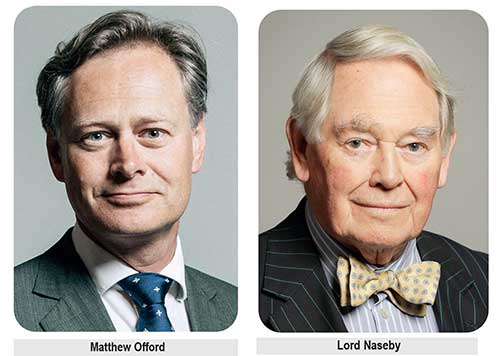 The British HC too side-stepped the issue. When the writer raised the issue with Lord Naseby soon after his explosive Oct 12, 2017 disclosure, the Conservative Party member said that he received an assurance from the Minister of State for the Foreign and Commonwealth Office, Mark Field, that the issue at hand would be examined (FCO to study Naseby’s proposals – The Island, Oct 26, 2017). However, when the writer sought an explanation from the British HC in Colombo on the same matter, the mission dismissed Lord Naseby’s statement on the basis he was not speaking for the British government (Naseby’s call doesn’t reflect UK’s stand – HC, The Island Dec 6, 2017).
The British HC too side-stepped the issue. When the writer raised the issue with Lord Naseby soon after his explosive Oct 12, 2017 disclosure, the Conservative Party member said that he received an assurance from the Minister of State for the Foreign and Commonwealth Office, Mark Field, that the issue at hand would be examined (FCO to study Naseby’s proposals – The Island, Oct 26, 2017). However, when the writer sought an explanation from the British HC in Colombo on the same matter, the mission dismissed Lord Naseby’s statement on the basis he was not speaking for the British government (Naseby’s call doesn’t reflect UK’s stand – HC, The Island Dec 6, 2017).
The UK never hesitated to praise Channel 4 News that propagated accusations that the Sri Lankan military massacred over 40,000 civilians. The then UK Prime Minister David Cameron went out of his way to praise the Channel 4 team accompanying him to Colombo for CHOGM 2013 when he addressed the media at the BMICH. Questions at this peculiar press conference were only fielded from a handpicked lot, especially from his retinue of embedded reporters from the UK brought with him. Is that another display of “British sense of justice and fair play”? But one plucky Lankan journalist Rajpal Abeynayake clearly shouted out “bloody hypocrites” as Cameron got up and left without taking any questions from independent journalists.
The UK should really examine its role here, how it had intentionally contributed to terrorism much to the disappointment of the majority of Sri Lankans. Let me remind you of a statement made by one-time UK High Commissioner in Colombo David Tattham in 1996 soon after the armed forces brought the Jaffna peninsula under the government control. Tattham, during a visit to Jaffna, urged the Diaspora not to fund the LTTE. But the UK didn’t take any notice of Tattham’s appeal. The LTTE was allowed to operate there with impunity.
Relevance of Offord’s speech
Despite being up to all types of villainy around the world (for example what did the ICC say recently about the behviour of her troops in Afghanistan and how London shamelessly passed hasty legislation to save their skins), the British are now championing human rights here in its new capacity as leader of the Sri Lanka Core Group without even examining the post-war situation. Perhaps a statement delivered by Matthew Offord, the current Chairman of the All Party Parliamentary Group on Sri Lanka (Lord Naseby is the Honorary President and Founder) on March 18, 2021 in the House of Commons debate on UK’s commitment to reconciliation, accountability and human rights in Sri Lanka underscored the need for a fresh examination of the war, post-war and related matters.
The following is the text of elected member Offord’s speech: “I start by highlighting my chairmanship of the all-party parliamentary group on Sri Lanka. Sri Lanka’s relationship with the rest of the world has been strongly shaped since the end of the conflict by allegations that the Army committed war crimes and crimes against humanity during the final phase of the civil war.
“A UN panel of experts reported in April 2011 that there were credible allegations of those crimes by both Government and Tamil Tiger forces. It remains my opinion that both sides were at fault. However, I regret the Government of Sri Lanka’s decision to withdraw support for UNHRC resolution 30/1 and note that previous domestic initiatives have failed to deliver meaningful accountability. I therefore urge the Sri Lankan Government to engage in a process that has the confidence of all on the island.
“But it would be remiss to state that the current Sri Lankan Government has failed to act. The Office on Missing Persons and the Office for Reparations are to be retained and strengthened, so that communities may build trust. It will be good to see reform of the Prevention of Terrorism Act and progress on the release of political prisoners. We must act as a critical friend to the country. We need to help strengthen democratic institutions, and we must trust Sri Lanka to develop its own judicial and non-judicial mechanisms.
“Since the end of the conflict, reconciliation has occurred among Sinhala, Tamil and Muslim communities. People are able to live wherever they wish. They benefit from state resources, such as free education and health services. Private land that was occupied by the military has been returned, former conflict areas have been de-mined with assistance from the United Kingdom, and more than 12,000 ex-LTTE— Liberation Tigers of Tamil Eelam—cadres have been rehabilitated. There is greater connectivity throughout the island and globally, and all of this has transformed the business sector and the lives of everyone in the country.
“But we should remember that a fresh resolution and accountability are not a panacea for addressing underlying tensions. Questions about how to address the legacy of the Sri Lankan conflict must be answered: what kind of justice is attainable? How should the victims of violations be treated in the process? What might punishment look like, and how can justice play a constructive role in forging a lasting peace?
“Draft legislation for a truth and reconciliation commission had been prepared under the previous Sri Lankan Government, and that could be revisited. If it gains universal support in Sri Lanka, truth seeking among all stakeholders, including the diaspora in many of our communities and constituencies could make a lasting difference. When these issues have been resolved, a sustainable and acceptable peace will endure. Given the goodwill between our two countries, I ask the Minister: how can the UK help to facilitate a TRC mechanism that is unique to the needs of Sri Lanka?”
Offord took a sensible and impartial stand on the Sri Lanka issue at the poorly attended debate.
Unfortunately, Offord has either deliberately or inadvertently been silent on the need to examine Gash reports pertaining to the Vanni war. The elected House of Commons member owed the public an explanation. Why shouldn’t the Conservative party member ask his government to release the entire set of Gash reports to help ascertain the truth?
Recently, former Sri Lanka Chief Justice Sarath Nanda Silva told the writer that examination of wartime dispatches from Colombo-based defence advisors and defence attaches would help Geneva to establish the truth. Those who had been pushing Sri Lanka on the human rights front are silent on their own records and tend to depend on faceless accusers. The CJ, 41 was referring to PoE declaration that war crimes accuser wouldn’t be examined till 2031. If Offord is really keen on post-war Sri Lanka reconciliation he should push for a thorough inquiry. By depriving access to wartime British HC dispatches from Colombo, one cannot help with the reconciliation.
The writer is sure Offord understands the British lost credibility by offering sanctuary to LTTE activist Adele Balasingham, wife of Anton Balasingham, British citizen of Sri Lankan origin. Did the British ever inquire into the possibility of Adele’s direct involvement with women suicide cadres? The possibility of Adele knowing the woman suicide bomber who targeted former Indian PM and Congress I leader Rajiv Gandhi can never be ruled out. If New Delhi is really interested in finding the truth it should be the first party to pick up this line of thinking.
How Sri Lanka helped enemy strategy
Sri Lanka facilitated Western strategy against the country by allowing anti-Sri Lanka propagandists a free hand. One-time Deputy Minister and retired Rear Admiral Sarath Weerasekera addressing a media briefing organized by civil society organization ‘Eliya’ backing Gotabaya Rajapaksa’s candidature at the 2019 presidential poll said that Lord Naseby’s disclosure could be the basis for Sri Lanka’s defence at the Geneva body. The Navy veteran was flanked by the then The Island political columnist C.A. Chandraprema (our present Permanent Representative in Geneva) and Ven. Medagoda Abhayatissa. Weerasekera, now the Public Security Minister, faulted the yahapalana government for not exploiting Lord Naseby’s revelation to Sri Lanka’s advantage (Lord Naseby’s call to revise Vanni death toll: Parliament faulted for not taking up vital issue – The Island Nov 8, 2017).
The SLPP government certainly owed the public an explanation how it used/failed to use Lord Naseby’s disclosure along with other credible information such as Lt. Col. Smith’s stand at the 2011 Colombo Defence seminar, Wikileaks revelations and still confidential UN report that dealt with the Vanni conflict and placed the total number of dead at 7,721 to build up a strong case.
The writer during separate media briefings during the Yahapalana administration raised the accountability issue and was told by Field Marshal Sarath Fonseka, Mahinda Samarasinghe and Dayasiri Jayasekera the cabinet had never discussed Sri Lanka’s response to alleged war crimes allegations. Fonseka’s colleagues in Nov 2017 (Dayasiri Jayasekera in his capacity as the Cabinet spokesperson) and Aug 2018 (Mahinda Samarasinghe in his capacity as the SLFP spokesperson) revealed a pathetic situation. They acknowledged that the Cabinet of ministers had not discussed Sri Lanka’s defence nor examined the Geneva Resolution. Jayasekera reacted angrily when the writer queried about the lapse on the part of the government. Jayasekera declared that a statement made by Lord Naseby in the House of Lords would be used by the government appropriately at the right time, though the Cabinet was yet to discuss it.
Jayasekera said that they wouldn’t take up issues pursued by The Island the way the newspaper wanted. It had not been taken up by the Cabinet on the basis it wasn’t considered a grave matter, the Minister said. The Minister initially asserted that Lord Naseby’s statement wasn’t directly relevant to the Geneva issue (Cabinet spokesman provoked by query on govt response to Naseby move – The Island Nov 16, 2017).
When the writer asked the then Deputy Minister of National Policies and Economic Affairs Dr. Harsha de Silva whether Lord Naseby’s disclosure could be used at the Universal Periodic Review (UPR) of the country’s human rights record at Geneva, the then UNPer said that the matter was not directly relevant to the UPR. He was responding to a query by The Island in his capacity as the leader of the country’s delegation to the UPR (The issue never discussed at cabinet: House of Lords statement not directly relevant to UPR-Dr. De Silva – The Island, Nov 14, 2017)
In spite of the change of government in Nov 2019, the country is yet to take tangible measures to expose the Geneva lie. The handling of the 46th Geneva session proved again Sri Lanka’s failure. Those responsible should keep in mind Geneva lie cannot be exposed by propaganda alone.
Features
Handunnetti and Colonial Shackles of English in Sri Lanka
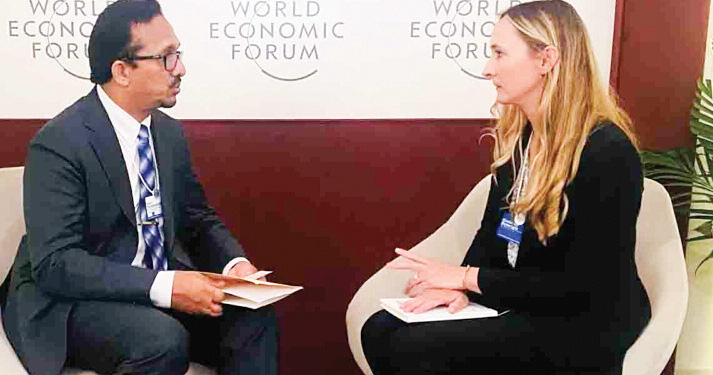
“My tongue in English chains.
I return, after a generation, to you.
I am at the end
of my Dravidic tether
hunger for you unassuaged
I falter, stumble.”
– Indian poet R. Parthasarathy
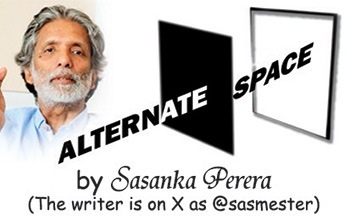 When Minister Sunil Handunnetti addressed the World Economic Forum’s ‘Is Asia’s Century at Risk?’ discussion as part of the Annual Meeting of the New Champions 2025 in June 2025, I listened carefully both to him and the questions that were posed to him by the moderator. The subsequent trolling and extremely negative reactions to his use of English were so distasteful that I opted not to comment on it at the time. The noise that followed also meant that a meaningful conversation based on that event on the utility of learning a powerful global language and how our politics on the global stage might be carried out more successfully in that language was lost on our people and pundits, barring a few commentaries.
When Minister Sunil Handunnetti addressed the World Economic Forum’s ‘Is Asia’s Century at Risk?’ discussion as part of the Annual Meeting of the New Champions 2025 in June 2025, I listened carefully both to him and the questions that were posed to him by the moderator. The subsequent trolling and extremely negative reactions to his use of English were so distasteful that I opted not to comment on it at the time. The noise that followed also meant that a meaningful conversation based on that event on the utility of learning a powerful global language and how our politics on the global stage might be carried out more successfully in that language was lost on our people and pundits, barring a few commentaries.
Now Handunnetti has reopened the conversation, this time in Sri Lanka’s parliament in November 2025, on the utility of mastering English particularly for young entrepreneurs. In his intervention, he also makes a plea not to mock his struggle at learning English given that he comes from a background which lacked the privilege to master the language in his youth. His clear intervention makes much sense.
The same ilk that ridiculed him when he spoke at WEF is laughing at him yet again on his pronunciation, incomplete sentences, claiming that he is bringing shame to the country and so on and so forth. As usual, such loud, politically motivated and retrograde critics miss the larger picture. Many of these people are also among those who cannot hold a conversation in any of the globally accepted versions of English. Moreover, their conceit about the so-called ‘correct’ use of English seems to suggest the existence of an ideal English type when it comes to pronunciation and basic articulation. I thought of writing this commentary now in a situation when the minister himself is asking for help ‘in finding a solution’ in his parliamentary speech even though his government is not known to be amenable to critical reflection from anyone who is not a party member.
The remarks at the WEF and in Sri Lanka’s parliament are very different at a fundamental level, although both are worthy of consideration – within the realm of rationality, not in the depths of vulgar emotion and political mudslinging.
The problem with Handunnetti’s remarks at WEF was not his accent or pronunciation. After all, whatever he said could be clearly understood if listened to carefully. In that sense, his use of English fulfilled one of the most fundamental roles of language – that of communication. Its lack of finesse, as a result of the speaker being someone who does not use the language professionally or personally on a regular basis, is only natural and cannot be held against him. This said, there are many issues that his remarks flagged that were mostly drowned out by the noise of his critics.
Given that Handunnetti’s communication was clear, it also showed much that was not meant to be exposed. He simply did not respond to the questions that were posed to him. More bluntly, a Sinhala speaker can describe the intervention as yanne koheda, malle pol , which literally means, when asked ‘Where are you going?’, the answer is ‘There are coconuts in the bag’.
He spoke from a prepared text which his staff must have put together for him. However, it was far off the mark from the questions that were being directly posed to him. The issue here is that his staff appears to have not had any coordination with the forum organisers to ascertain and decide on the nature of questions that would be posed to the Minister for which answers could have been provided based on both global conditions, local situations and government policy. After all, this is a senior minister of an independent country and he has the right to know and control, when possible, what he is dealing with in an international forum.
This manner of working is fairly routine in such international fora. On the one hand, it is extremely unfortunate that his staff did not do the required homework and obviously the minister himself did not follow up, demonstrating negligence, a want for common sense, preparedness and experience among all concerned. On the other hand, the government needs to have a policy on who it sends to such events. For instance, should a minister attend a certain event, or should the government be represented by an official or consultant who can speak not only fluently, but also with authority on the subject matter. That is, such speakers need to be very familiar with the global issues concerned and not mere political rhetoric aimed at local audiences.
Other than Handunnetti, I have seen, heard and also heard of how poorly our politicians, political appointees and even officials perform at international meetings (some of which are closed door) bringing ridicule and disastrous consequences to the country. None of them are, however, held responsible.
Such reflective considerations are simple yet essential and pragmatic policy matters on how the government should work in these conditions. If this had been undertaken, the WEF event might have been better handled with better global press for the government. Nevertheless, this was not only a matter of English. For one thing, Handunnetti and his staff could have requested for the availability of simultaneous translation from Sinhala to English for which pre-knowledge of questions would have been useful. This is all too common too. At the UN General Assembly in September, President Dissanayake spoke in Sinhala and made a decent presentation.
The pertinent question is this; had Handunetti had the option of talking in Sinhala, would the interaction have been any better? That is extremely doubtful, barring the fluency of language use. This is because Handunnetti, like most other politicians past and present, are good at rhetoric but not convincing where substance is concerned, particularly when it comes to global issues. It is for this reason that such leaders need competent staff and consultants, and not mere party loyalists and yes men, which is an unfortunate situation that has engulfed the whole government.
What about the speech in parliament? Again, as in the WEF event, his presentation was crystal clear and, in this instance, contextually sensible. But he did not have to make that speech in English at all when decent simultaneous translation services were available. In so far as content was concerned, he made a sound argument considering local conditions which he knows well. The minister’s argument is about the need to ensure that young entrepreneurs be taught English so that they can deal with the world and bring investments into the country, among other things. This should actually be the norm, not only for young entrepreneurs, but for all who are interested in widening their employment and investment opportunities beyond this country and in accessing knowledge for which Sinhala and Tamil alone do not suffice.
As far as I am concerned, Handunetti’s argument is important because in parliament, it can be construed as a policy prerogative. Significantly, he asked the Minister of Education to make this possible in the educational reforms that the government is contemplating.
He went further, appealing to his detractors not to mock his struggle in learning English, and instead to become part of the solution. However, in my opinion, there is no need for the Minister to carry this chip on his shoulder. Why should the minister concern himself with being mocked for poor use of English? But there is a gap that his plea should have also addressed. What prevented him from mastering English in his youth goes far deeper than the lack of a privileged upbringing.
The fact of the matter is, the facilities that were available in schools and universities to learn English were not taken seriously and were often looked down upon as kaduwa by the political spectrum he represents and nationalist elements for whom the utilitarian value of English was not self-evident. I say this with responsibility because this was a considerable part of the reality in my time as an undergraduate and also throughout the time I taught in Sri Lanka.
Much earlier in my youth, swayed by the rhetoric of Sinhala language nationalism, my own mastery of English was also delayed even though my background is vastly different from the minister. I too was mocked, when two important schools in Kandy – Trinity College and St. Anthony’s College – refused to accept me to Grade 1 as my English was wanting. This was nearly 20 years after independence. I, however, opted to move on from the blatant discrimination, and mastered the language, although I probably had better opportunities and saw the world through a vastly different lens than the minister. If the minister’s commitment was also based on these social and political realities and the role people like him had played in negating our English language training particularly in universities, his plea would have sounded far more genuine.
If both these remarks and the contexts in which they were made say something about the way we can use English in our country, it is this: On one hand, the government needs to make sure it has a pragmatic policy in place when it sends representatives to international events which takes into account both a person’s language skills and his breadth of knowledge of the subject matter. On the other hand, it needs to find a way to ensure that English is taught to everyone successfully from kindergarten to university as a tool for inclusion, knowledge and communication and not a weapon of exclusion as is often the case.
This can only bear fruit if the failures, lapses and strengths of the country’s English language teaching efforts are taken into cognizance. Lamentably, division and discrimination are still the main emotional considerations on which English is being popularly used as the trolls of the minister’s English usage have shown. It is indeed regrettable that their small-mindedness prevents them from realizing that the Brits have long lost their long undisputed ownership over the English language along with the Empire itself. It is no longer in the hands of the colonial masters. So why allow it to be wielded by a privileged few mired in misplaced notions of elitism?
Features
Finally, Mahinda Yapa sets the record straight
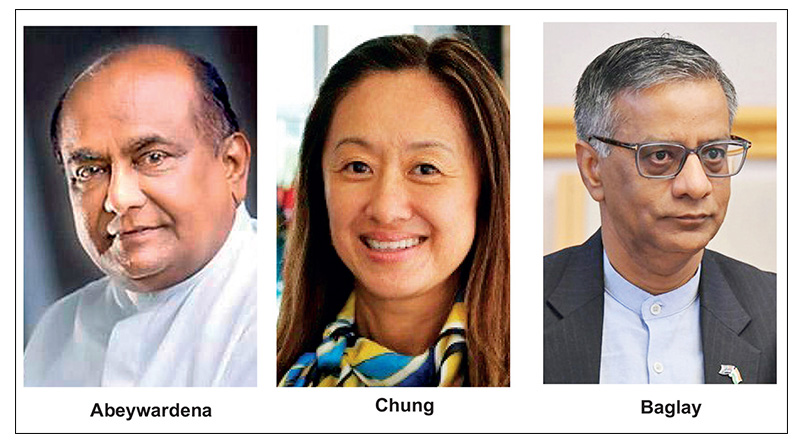
Clandestine visit to Speaker’s residence:
Finally, former Speaker Mahinda Yapa Abeywardena has set the record straight with regard to a controversial but never properly investigated bid to swear in him as interim President. Abeywardena has disclosed the circumstances leading to the proposal made by external powers on the morning of 13 July, 2022, amidst a large scale staged protest outside the Speaker’s official residence, situated close to Parliament.
Lastly, the former parliamentarian has revealed that it was then Indian High Commissioner, in Colombo, Gopal Baglay (May 2022 to December 2023) who asked him to accept the presidency immediately. Professor Sunanda Maddumabandara, who served as Senior Advisor (media) to President Ranil Wickremesinghe (July 2022 to September 2024), disclosed Baglay’s direct intervention in his latest work, titled ‘Aragalaye Balaya’ (Power of Aragalaya).
Prof. Maddumabandara quoted Abeywardena as having received a startling assurance that if he agreed to accept the country’s leadership, the situation would be brought under control, within 45 minutes. Baglay had assured Abeywardena that there is absolutely no harm in him succeeding President Gotabaya Rajapaksa, in view of the developing situation.
The author told the writer that only a person who had direct control over the violent protest campaign could have given such an assurance at a time when the whole country was in a flux.
One-time Vice Chancellor of the Kelaniya University, Prof. Maddumabandara, launched ‘Aragalaye Balaya’ at the Sri Lanka Foundation on 20 November. In spite of an invitation extended to former President Gotabaya Rajapaksa, the ousted leader hadn’t attended the event, though UNP leader Ranil Wickremesinghe was there. Maybe Gotabaya felt the futility of trying to expose the truth against evil forces ranged against them, who still continue to control the despicable agenda.
Obviously, the author has received the blessings of Abeywardena and Wickremesinghe to disclose a key aspect in the overall project that exploited the growing resentment of the people to engineer change of Sri Lankan leadership.
The declaration of Baglay’s intervention has contradicted claims by National Freedom Front (NFF) leader Wimal Weerawansa (Nine: The hidden story) and award-winning writer Sena Thoradeniya (Galle Face Protest: System change for anarchy) alleged that US Ambassador Julie Chung made that scandalous proposal to Speaker Abeywardena. Weerawansa and Thoradeniya launched their books on 25 April and 05 July, 2023, at the Sri Lanka Foundation and the National Library and Documentation Services Board, Independence Square, respectively. Both slipped in accusing Ambassador Chung of making an abortive bid to replace Gotabaya Rajapaksa with Mahinda Yapa Abeywardena.
Ambassador Chung categorically denied Weerawansa’s allegation soon after the launch of ‘Nine: The hidden story’ but stopped short of indicating that the proposal was made by someone else. Chung had no option but to keep quiet as she couldn’t, in response to Weerawansa’s claim, have disclosed Baglay’s intervention, under any circumstances, as India was then a full collaborator with Western designs here for its share of spoils. Weerawansa, Thoradeniya and Maddumabandara agree that Aragalaya had been a joint US-Indian project and it couldn’t have succeeded without their intervention. Let me reproduce the US Ambassador’s response to Weerawansa, who, at the time of the launch, served as an SLPP lawmaker, having contested the 2020 August parliamentary election on the SLPP ticket.
“I am disappointed that an MP has made baseless allegations and spread outright lies in a book that should be labelled ‘fiction’. For 75 years, the US [and Sri Lanka] have shared commitments to democracy, sovereignty, and prosperity – a partnership and future we continue to build together,” Chung tweeted Wednesday 26 April, evening, 24 hours after Weerawansa’s book launch.
Interestingly, Gotabaya Rajapaksa has been silent on the issue in his memoirs ‘The Conspiracy to oust me from Presidency,’ launched on 07 March, 2024.
What must be noted is that our fake Marxists, now entrenched in power, were all part and parcel of Aragalaya.
A clandestine meeting
Abeywardena should receive the appreciation of all for refusing to accept the offer made by Baglay, on behalf of India and the US. He had the courage to tell Baglay that he couldn’t accept the presidency as such a move violated the Constitution. In our post-independence history, no other politician received such an offer from foreign powers. When Baglay stepped up pressure, Abeywardena explained that he wouldn’t change his decision.
Maddumabandara, based on the observations made by Abeywardena, referred to the Indian High Commissioner entering the Speaker’s Official residence, unannounced, at a time protesters blocked the road leading to the compound. The author raised the possibility of Baglay having been in direct touch with those spearheading the high profile political project.
Clearly Abeywardena hadn’t held back anything. The former Speaker appeared to have responded to those who found fault with him for not responding to allegations, directed at him, by revealing everything to Maddumabandara, whom he described in his address, at the book launch, as a friend for over five decades.
At the time, soon after Baglay’s departure from the Speaker’s official residence, alleged co-conspirators Ven. Omalpe Sobitha, accompanied by Senior Professor of the Sinhala Faculty at the Colombo University, Ven. Agalakada Sirisumana, health sector trade union leader Ravi Kumudesh, and several Catholic priests, arrived at the Speaker’s residence where they repeated the Indian High Commissioner’s offer. Abeywardena repeated his previous response despite Sobitha Thera acting in a threatening manner towards him to accept their dirty offer. Shouldn’t they all be investigated in line with a comprehensive probe?
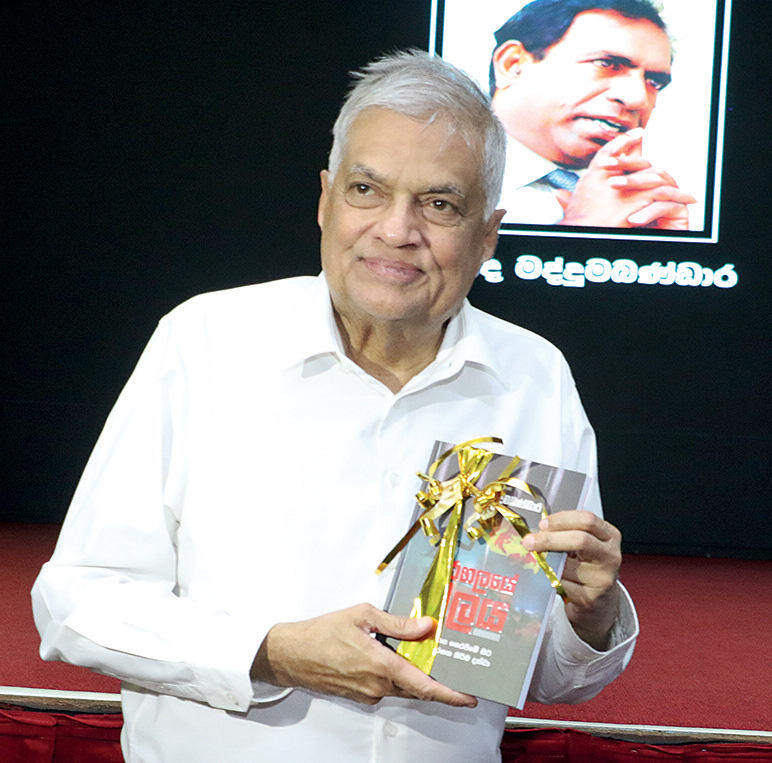
Ex-President Wickremesinghe with a copy of Aragalaye Balaya he received from its author, Prof. Professor Sunanda Maddumabandara, at the Sri Lanka Foundation recently (pic by Nishan S Priyantha)
On the basis of what Abeywardena had disclosed to him, Maddumabanadara also questioned the circumstances of the deployment of the elite Special Task Force (STF) contingent at the compound. The author asked whether that deployment, without the knowledge of the Speaker, took place with the intervention of Baglay.
Aragalaye Balaya
is a must read for those who are genuinely interested in knowing the unvarnished truth. Whatever the deficiencies and inadequacies on the part of the Gotabaya Rajapaksa administration, external powers had engineered a change of government. The writer discussed the issues that had been raised by Prof. Maddumabandara and, in response to one specific query, the author asserted that in spite of India offering support to Gotabaya Rajapaksa earlier to get Ranil Wickremesinghe elected as the President by Parliament to succeed him , the latter didn’t agree with the move. Then both the US and India agreed to bring in the Speaker as the Head of State, at least for an interim period.
If Speaker Abeywardena accepted the offer made by India, on behalf of those backing the dastardly US backed project, the country could have experienced far reaching changes and the last presidential election may not have been held in September, 2004.
After the conclusion of his extraordinary assignment in Colombo, Baglay received appointment as New Delhi’s HC in Canberra. Before Colombo, Baglay served in Indian missions in Ukraine, Russia, the United Kingdom, Nepal and Pakistan (as Deputy High Commissioner).
Baglay served in New Delhi, in the office of the Prime Minister of India, and in the Ministry of External Affairs as its spokesperson, and in various other positions related to India’s ties with her neighbours, Europe and multilateral organisations.
Wouldn’t it be interesting to examine who deceived Weerawansa and Thoradeniya who identified US Ambassador Chung as the secret visitor to the Speaker’s residence. Her high-profile role in support of the project throughout the period 31 March to end of July, 2022, obviously made her an attractive target but the fact remains it was Baglay who brought pressure on the then Speaker. Mahinda Yapa Abeywardena’s clarification has given a new twist to “Aragalaya’ and India’s diabolical role.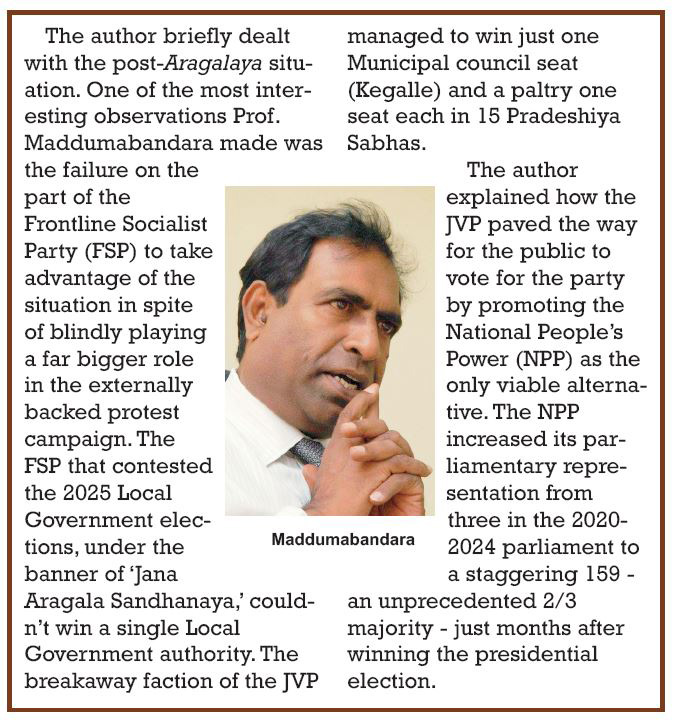
Absence of investigations
Sri Lanka never really wanted to probe the foreign backed political plot to seize power by extra-parliamentary means. Although some incidents had been investigated, the powers that be ensured that the overall project remained uninvestigated. In fact, Baglay’s name was never mentioned regarding the developments, directly or indirectly, linked to the devious political project. If not for Prof. Maddumabandara taking trouble to deal with the contentious issue of regime change, Baglay’s role may never have come to light. Ambassador Chung would have remained the target of all those who found fault with US interventions. Let me be clear, the revelation of Baglay’s clandestine meeting with the Speaker didn’t dilute the role played by the US in Gotabaya Rajapaksa’s removal.
If Prof. Maddumabandara propagated lies, both the author and Abeywardana should be appropriately dealt with. Aragalaye Balaya failed to receive the desired or anticipated public attention. Those who issue media statements at the drop of a hat conveniently refrained from commenting on the Indian role. Even Abeywardena remained silent though he could have at least set the record straight after Ambassador Chung was accused of secretly meeting the Speaker. Abeywardena could have leaked the information through media close to him. Gotabaya Rajapaksa and Ranil Wickremesinghe, too, could have done the same but all decided against revealing the truth.
A proper investigation should cover the period beginning with the declaration made by Gotabaya Rajapaksa’s government, in April 2022, regarding the unilateral decision to suspend debt repayment. But attention should be paid to the failure on the part of the government to decide against seeking assistance from the International Monetary Fund (IMF) to overcome the crisis. Those who pushed Gotabaya Rajapaksa to adopt, what they called, a domestic solution to the crisis created the environment for the ultimate collapse that paved the way for external interventions. Quite large and generous Indian assistance provided to Sri Lanka at that time should be examined against the backdrop of a larger frightening picture. In other words, India was literally running with the sheep while hunting with the hounds. Whatever the criticism directed at India over its role in regime change operation, prompt, massive and unprecedented post-Cyclone Ditwah assistance, provided by New Delhi, saved Sri Lanka. Rapid Indian response made a huge impact on Sri Lanka’s overall response after having failed to act on a specific 12 November weather alert.
It would be pertinent to mention that all governments, and the useless Parliament, never wanted the public to know the truth regarding regime change project. Prof. Maddumabandara discussed the role played by vital sections of the armed forces, lawyers and the media in the overall project that facilitated external operations to force Gotabaya Rajapaksa out of office. The author failed to question Wickremesinghe’s failure to launch a comprehensive investigation, with the backing of the SLPP, immediately after he received appointment as the President. There seems to be a tacit understanding between Wickremesinghe and the SLPP that elected him as the President not to initiate an investigation. Ideally, political parties represented in Parliament should have formed a Special Parliamentary Select Committee (PSC) to investigate the developments during 2019 to the end of 2022. Those who had moved court against the destruction of their property, during the May 2022 violence directed at the SLPP, quietly withdrew that case on the promise of a fresh comprehensive investigation. This assurance given by the Wickremesinghe government was meant to bring an end to the judicial process.
When the writer raised the need to investigate external interventions, the Human Rights Commission of Sri Lanka (HRCSL) sidestepped the issue. Shame on the so-called independent commission, which shows it is anything but independent.
Sumanthiran’s proposal
Since the eradication of the Liberation Tigers of Tamil Eelam (LTTE) in May 2009, the now defunct Tamil National Alliance’s (TNA) priority had been convincing successive governments to withdraw the armed forces/ substantially reduce their strength in the Northern and Eastern Provinces. The Illankai Thamil Arasu Kadchi (ITAK)-led TNA, as well as other Tamil political parties, Western powers, civil society, Tamil groups, based overseas, wanted the armed forces out of the N and E regions.
Abeywardena also revealed how the then ITAK lawmaker, M.A. Sumanthiran, during a tense meeting chaired by him, in Parliament, also on 13 July, 2022, proposed the withdrawal of the armed forces from the N and E for redeployment in Colombo. The author, without hesitation, alleged that the lawmaker was taking advantage of the situation to achieve their longstanding wish. The then Speaker also disclosed that Chief Opposition Whip Lakshman Kiriella and other party leaders leaving the meeting as soon as the armed forces reported the protesters smashing the first line of defence established to protect the Parliament. However, leaders of minority parties had remained unruffled as the situation continued to deteriorate and external powers stepped up efforts to get rid of both Gotabaya Rajapaksa and Ranil Wickremesinghe to pave the way for an administration loyal and subservient to them. Foreign powers seemed to have been convinced that Speaker Abeywardena was the best person to run the country, the way they wanted, or till the Aragalaya mob captured the House.
The Author referred to the role played by the media, including social media platforms, to promote Gotabaya Rajapaksa’s successor. Maddumamabandara referred to the Hindustan Times coverage to emphasise the despicable role played by a section of the media to manipulate the rapid developments that were taking place. The author also dealt with the role played by the Janatha Vimukthi Peramuna (JVP) in the project with the focus on how that party intensified its actions immediately after Gotabaya Rajapaksa stepped down.
Disputed assessment
The Author identified Ministers Bimal Rathnayaka, Sunil Handunetti and K.D. Lal Kantha as the persons who spearheaded the JVP bid to seize control of Parliament. Maddumabanda unflinchingly compared the operation, mounted against Gotabaya Rajapaksa, with the regime change operations carried out in Iraq, Libya, Egypt and Ukraine. Asserting that governments loyal to the US-led Western block had been installed in those countries, the author seemed to have wrongly assumed that external powers failed to succeed in Sri Lanka (pages 109 and 110). That assertion is utterly wrong. Perhaps, the author for some unexplained reasons accepted what took place here. Nothing can be further from the truth than the regime change operation failed (page 110) due to the actions of Gotabaya Rajapaksa, Mahinda Yapa Abeywardana and Ranil Wickremesinghe. In case, the author goes for a second print, he should seriously consider making appropriate corrections as the current dispensation pursues an agenda in consultation with the US and India.
The signing of seven Memorandums of Understanding (MoUs) with India, including one on defence, and growing political-defence-economic ties with the US, have underscored that the JVP-led National People’s Power (NPP) may not have been the first choice of the US-India combine but it is certainly acceptable to them now.
The bottom line is that a democratically elected President, and government, had been ousted through unconstitutional means and Sri Lanka meekly accepted that situation without protest. In retrospect, the political party system here has been subverted and changed to such an extent, irreparable damage has been caused to public confidence. External powers have proved that Sri Lanka can be influenced at every level, without exception, and the 2022 ‘Aragalaya’ is a case in point. The country is in such a pathetic state, political parties represented in Parliament and those waiting for an opportunity to enter the House somehow at any cost remain vulnerable to external designs and influence.
Cyclone Ditwah has worsened the situation. The country has been further weakened with no hope of early recovery. Although the death toll is much smaller compared to that of the 2004 tsunami, economic devastation is massive and possibly irreversible and irreparable.
By Shamindra Ferdinando
Midweek Review
House erupts over Met Chief’s 12 Nov unheeded warning about cyclone Ditwah
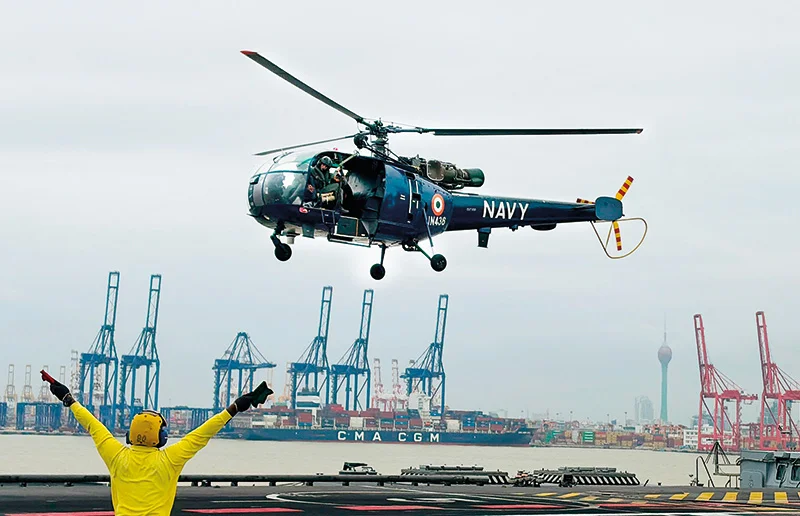
Pakistan arranged a series of C-130 humanitarian flights to transport the Urban Search and Rescue (USAR) team, fully equipped field hospitals, and approximately 100 tons of relief assistance. Pakistan, whose assistance during the war prevented the breaking up of Sri Lanka, also directed a Pakistan Navy Ship (PNS), that was here to participate in the International Fleet Review to mark Sri Lanka Navy’s 75th anniversary, to engage in humanitarian operations. The Pakistan High Commission here said that the vessel’s onboard helicopter was deployed for relief and rescue missions, in coordination with Sri Lankan Forces, extending crucial aerial support to affected areas. (At the time this edition went to press, Pakistan hasn’t been able to dispatch the aid aircraft due to India not granting sufficient time to carry out the movement, Pakistan HC in Colombo alleged. India earlier said that approval has been granted for Pakistan to fly over India)
The year 2025 ends with devastating loss of lives and property, both private and public, as a result of floods and landslides triggered by Cyclone Ditwah.
Social media erupted over accusations that the National People’s Power (NPP)government failed to issue a proper warning, in spite of the Director General of the Meteorology Department, Athula Karunanayaka, declaring the impending unprecedented danger.
Karunanayaka made the deadly prediction on 12 November on ‘Big Focus.’ He said so responding to ‘Big Focus’ presenter Kalindu Karunaratne.
Karunanayake didn’t mince his words when he warned of the impending catastrophe. The top official warned that the situation could take a turn for the worse on or after 14 November. Declaring that the threat could progress rapidly though it may not happen on 14 November, Katunanayake said at that moment he wouldn’t call the development a cyclone.
Cyclone Ditwah made landfall on 27 November, two weeks after DG Karunanayake’s warning.
Some compared the alleged lapse with the failure on the part of the Yahapalana administration to thwart the 2019 Easter Sunday carnage, though the powers that be received actionable intelligence.
The nearly one-hour long programme entirely dealt with the developing weather situation. The Director General of the Disaster Management Centre (DMC), Major General (retd.) Sampath Kotuwegoda, and scientist Imaya Ariyarathna of the National Building Research Organisation (NBRO) joined the discussion.
What really prompted ‘Big Focus’ to invite them for a discussion on weather at a time when much more interesting developments were taking place, with a section of the Opposition planning the Nugegoda protest. Let me emphasise that the Meteorology Department comes under the purview of the Ministry of Defence (MoD) and it works closely with the DMC. President Anura Kumara Dissanayake is the Minister of Defence, while his deputy is Major General (retd.) Aruna Jayasekera. The Secretary to the MoD is celebrated helicopter gunship pilot, Air Vice Marshal (retd.) Sampath Thuyakontha.
It would be pertinent to ask whether the Meteorology Department alerted the Defence Ministry, in writing, regarding the impending threat. Had DG Karunanayake been so sure of the developing threat shouldn’t he have advised the government immediately? In addition to DG Karunanayake, it would be necessary to inquire into the DMC’s response and that of NBRO as both organisations had been represented at the discussion.
In fact, the Metrology Chief should have advised the government of the developing situation before he appeared on ‘Big Focus.’ What did the Metrology Department, the DMC and NBRO do over the next 10 days before Cyclone Ditwah ravaged Sri Lanka?
Instead of demanding a Parliamentary Select Committee (PSC) to ascertain the overall failure of those responsible to act on available data, the main Opposition Samagi Jana Balawegaya (SJB) pursued a politically motivated agenda. Finally, the SJB forcefully raised the issues at hand in Parliament on 01 December. The government struggled to cope up with Opposition accusations.
A section of the Opposition sought to take political advantage of the developing crisis by demanding the cancellation of a national programme called the ‘Sri Lankan Day’, meant to foster unity and understanding among the country’s diverse communities and utilisation of the funds, allocated for that project, to provide urgently required assistance for the needy.
Buddhasasana, Religious and Cultural Affairs Ministry has been tasked with implementing that programme, which is scheduled to take place on 12, 13, and 14 December, 2025. The Opposition should have pressed both the government and DG Meteorology as to how specific warnings weren’t issued at least in the wake of the ‘Big Focus’ disclosure.
Political conspiracy
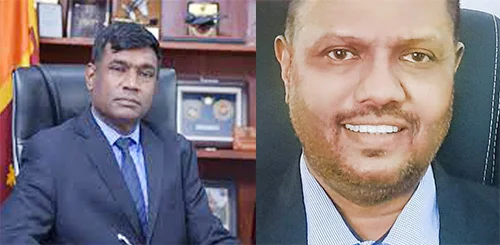
Sampath Kotuwegoda / Athula Karunanayaka
Lawyer and political commentator Nayana Tharanga Gamage lambasted Derana over repeating that segment of the programnme where DG Karunanayake issued the warning. Gamage found fault with the television channel for its reportage while raising the possibility of that channel propagating anti-NPP government propaganda for the benefit of Derana Chief. Gamage was referring to Sarvajana Balaya leader and its only MP Dilith Jayaweera (National List).
Referring to previous instances of the media exploiting crisis situations, Attorney-at-Law Gamage, in his regular social media comment that always addressed issues, lambasted Derana for its reportage of Cyclone Ditwah.
However, the failure on the part of the SJB, and those who organised the Nugegoda rally, to take up vigorously the disclosure made on ‘Big Focus,’ is quite disappointing. All three institutions that had been represented at the discussion with Kalindu Karunaratne owed an explanation and apology as to why absolutely no action was taken until Cyclone Ditwah struck Sri Lanka.
Had the JVP-led NPP represented parliamentary Opposition, that party would have definitely raised the issue. Even if the irresponsible Opposition so far failed to take up this issue, it would be the responsibility of the government to explain the developments since 12 November.
But even if prior warnings had been issued in the wake of ‘Big Focus’ declaration, the destruction caused to infrastructure and houses/buildings couldn’t have been averted but it could have been minimised and certainly many lives could have been saved. Experts say the impact could have been minimised if the authorities had lowered the water levels in the reservoirs, systematically, much earlier as they had been forewarned of the coming monster storm, instead of suddenly releasing vast quantities of water when things were too late, which caused devastating floods downstream. At the time of writing this, the death toll had passed 800 with bodies of over 400 men, women and children yet unaccounted for, and they may never be found.
The number of deaths caused by Cyclone Ditwah is much more than from the Easter Sunday carnage. Multiple attacks, blamed on the National Thowheeth Jaamath (NTJ), claimed the lives of approximately 270 people, andabout 500 received injuries.
Economic fallout of the devastation caused by Cyclone Ditwah has to be ascertained. The national economy, still struggling to cope up with the disgraceful financial status, may experience intensified pressure as the government had no option but to review its overall strategy. The impact on tourism would be devastating as happened in the wake of 2019 Easter Sunday carnage and those who are responsible for managing the economy would be compelled to rethink their economic strategy.
Both the government and the Opposition would have to sink their differences and work together to overcome the developing crisis. The devastation is so huge a reappraisal of budget expenditure, too, may be necessary without delay. Whatever the ruling party politicians may say, it would be prudent to reexamine the arrangement with the International Monetary Fund (IMF) as well as the World Bank and other lending bodies as to how the 2028 deadline for the resumption of debt repayment can be met.
The reportage of the post-Cyclone Ditwah situation primarily focused on rescue efforts and providing of relief. The long-term impact of the devastation caused seemed to have been conveniently forgotten.
The government should realise that its overwhelming 2/3 majority in Parliament does not mean anything. In fact, the re-building of public infrastructure and private property would pose such an intimidating challenge, the NPP, perhaps, may have to change its priorities and think of short, medium and long-term plans to revive the national economy, especially the agriculture sector, which received a body blow as never before.
The urgent need to examine the devastating impact of the disruption of overland main roads, leading to/from the upcountry region, cannot be overemphasised. Unfortunately, the powers that be seemed to be interested in the basic coverage of the post-Cyclone Ditwah developments.
It would be interesting to know whether the Meteorology Department alerted the Examination Department regarding the developing situation before or after the ‘Big Focus’ discussion or never bothered to do so before Cyclone Ditwah swooped down on Sri Lanka. The failure on the part of the Meteorology Department to do so cannot be pardoned under any circumstances. The DMC is also equally responsible for the lapse as its head, Major General (retd.) Kotuwegoda, had been part of the ‘Big Focus’ panel.
The Advance Level examination commenced on 10 November, two days before the Meteorology Department issued a warning. Regardless of assurances given by the Examination Department, the government would find it extremely difficult to re-schedule the examination which was earlier scheduled to be completed on 05 December. Let us hope Advance Level candidates weren’t among the dead and those disappeared.
Operation Sagar Bandhu
In line with India’s ‘Neighbourhood First Policy’ New Delhi acted swiftly and decisively in the wake of Cyclone Ditwah strike.
Aircraft carrier INS Vikrant and INS Udaygiri — the second ship of Project 17A’s stealth frigates that arrived in Colombo to participate in the International Fleet Review (IFR) to mark Sri Lanka Navy’s 75tth anniversary that was to be held on 30 November brought in urgently needed supplies for Sri Lankan victims. India seemed to have been aware of the developing threat and brought in essential items which were handed over to Sri Lanka. The vessels that were sent here to participate in the IFR, according to a press release issued by the Indian High Commission in Colombo, carried 4.5 tons of dry rations and 2 tons of fresh rations, consisting of staple foods, packaged and ready-to-eat items, dairy and bakery products, beverages, and other nutritional essentials to meet urgent household needs. In addition, the vessels delivered other essential survival items.
Chetak helicopters were launched from INS Vikrant to airlift those who had been marooned while Mi 17 helicopters of Indian Air Force (IAF) conducted search and rescue operations over the last weekend near the inaccessible Kotmale area, saving stranded persons, including pregnant women, infants, and those critically injured. The IHC declared that those who had been rescued consisted of Sri Lankans, Indians, Germans, Slovenians, British, South Africans, Polish and people from Belarus, Iran, Australia, Pakistan and Bangladesh. Further, the helicopters also airlifted critical casualties to Colombo as well as carrying Sri Lankan Army personnel to landslide affected regions.
Obviously, Sri Lanka couldn’t have faced the dire situation without Indian assistance. The Indian response is very much similar to the action during the economic crisis here a few years back. It would be also interesting to examine whether against the backdrop of the scheduled IFR, Navy Headquarters sought clarification from the Meteorology Department regarding the 12 November Cyclone warning. The Navy couldn’t go ahead with the IFR with the participation of eight warships from seven countries.
Two IAF aircraft, a C-130J and an IL-76, brought in approximately 21 tonnes of relief supplies, along with 80 personnel from the National Disaster Response Force (NDRF). They were deployed in Puttalam and Badulla, two of the worst-affected regions. Subsquently, India sent more assistance, both in the form of men and material. We should also be grateful for assistance provided by India, China, Japan, the US, Australia, UK, New Zealand and others but New Delhi cannot absolve itself of the responsibility for causing terrorism here.
Tragedy
During relief missions on Sunday (30), SLAF lost a pilot, Wing Commander Nirmal Siyambalapitiya, when he was forced to make an emergency landing near the Lunuwila bridge. Siyambalapitiya, with over 3,000 flying hours during his distinguished service, succumbed to his injuries, and had been in command of the Bell 212 altogether carrying five personnel, including a co-pilot.
Against the backdrop of the Commander of the Air Force, Air Marshal Bandu Edirisinghe, ordering the setting up of a board of inquiry to investigate the incident, the government cannot ignore the need to probe the failure to act in spite of the Met Department issuing warnings.
Five SLN personnel, attached to the Chalai detachment, in the Vettilaikerni sector, also died, on Sunday, when they were caught in flood waters.
In spite of the setbacks, the war-winning armed forces sustained relief and rescue efforts in virtually all affected areas. The social media comments on the role played by the armed forces reminded the country again and again how the public are divided over the government’s approach.
Let me be clear, regardless of the issuance of an early warning, floods and landslides were certain to cause catastrophe but some lives could have been saved and household items, and vehicles, moved to safety. The government is accountable for the failure to act on the basis of the Meteorology Department’s assessment.
Some social media posts reminded me of the alleged Helping Hambantota financial scam perpetrated after the 2004 tsunami. International funds that had been sent to the then Prime Minister Mahinda Rajapaksa’s official account were allegedly transferred to a privately-run scheme. That had been a major issue at the 2005 presidential election won by Mahinda Rajapaksa.
Helping the Hambantota scheme caused Mahinda Rajapaksa immense harm. The Criminal Investigation Department (CID) sought permission from the courts to investigate the accounts alleging that there was a breach of trust concerning nearly 83 million Sri Lankan rupees (approx. 820,000 US dollars).
Deputy Solicitor General, Palitha Fernando, who represented the Attorney General, told court that the CID was directed to initiate an investigation after a complaint made by United National Party (UNP) parliamentarian Kabir Hashim.
This transpired when a fundamental rights petition by Mahinda Rajapaksa against the probe by the CID was taken into consideration by the Supreme Court. The then Chief Justice Sarath Nanda Silva is on record as having said the CID seemed to have worked under political influence as there was no written evidence against the then Prime Minister, Mahinda Rajapaksa.
The CJ said President Rajapaksa had to seek legal assistance due to “inappropriate” action by the Criminal Investigation Department (CID). Years later Sarath Nanda Silva changed his stand on this particular case.
The bottom line is the latest calamity has weakened Sri Lanka further. That is the undeniable truth. Whatever the politicians say Sri Lanka faces an uphill task in pursuing economic recovery.
The government may be compelled to cancel a controversial deal to procure over 1,700 diesel double cabs in violation of laid down procedures. We wonder why the government at least did not make any attempt to procure electric vehicles for the government fleet as it would have at least helped to lessen air pollution that many areas of the country has been enveloped in for some time. It would even save the money that would have been spent on costly diesel and engine oil. Perhaps, in economic terms, the devastation caused by Cyclone Ditwah is definitely far worse than the 2019 Easter Sunday attacks. The cost of infrastructure losses is yet to be estimated and appropriate measures taken to restore them. The task seems to be overwhelming, especially against the backdrop of interested parties seeking to take advantage of the calamity.
Maybe we should ask our powerful friends in the West, like the USA, to postpone sending attack helicopters and military transport planes as we are not in any war with any other country, but instead to send us things like medicines that our hospitals are gravely short of. Definitely when we can hardly stand up on our own feet how can we afford to get into scrapes started by others?
-

 News2 days ago
News2 days agoOver 35,000 drug offenders nabbed in 36 days
-
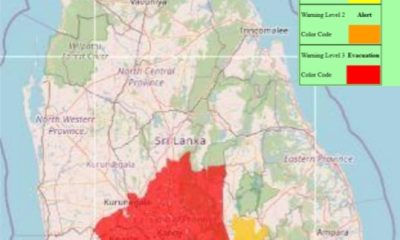
 News6 days ago
News6 days agoLevel III landslide early warning continue to be in force in the districts of Kandy, Kegalle, Kurunegala and Matale
-

 Business4 days ago
Business4 days agoLOLC Finance Factoring powers business growth
-

 News4 days ago
News4 days agoCPC delegation meets JVP for talks on disaster response
-
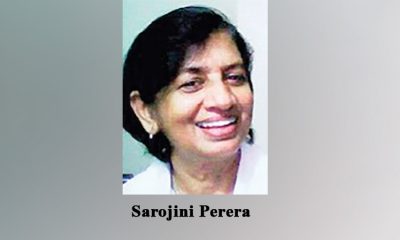
 News4 days ago
News4 days agoA 6th Year Accolade: The Eternal Opulence of My Fair Lady
-

 News2 days ago
News2 days agoRising water level in Malwathu Oya triggers alert in Thanthirimale
-
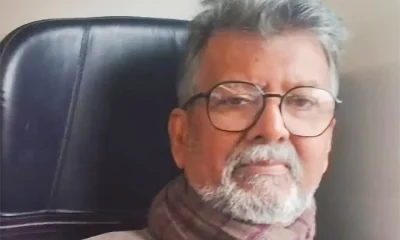
 News1 day ago
News1 day agoCyclone Ditwah leaves Sri Lanka’s biodiversity in ruins: Top scientist warns of unseen ecological disaster
-

 Latest News4 days ago
Latest News4 days agoLandslide RED warnings continue to be in force for the Districts of Kandy, Kegalle, Kurunegala, Matale and Nuwara Eliya













